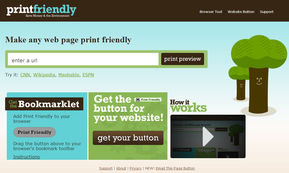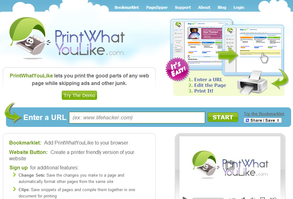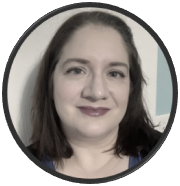 As a teacher, I know that it's important for my students to be reading nonfiction as well as fiction. One great way to incorporate nonfiction is by having students read online news articles. I like to use The Week, The Huffington Post, and the NY Times. I'm also a frequent visitor of Kelly Gallagher's Article of the Week archives. While all of these websites offer great news articles, printing nice "clean" ad-free copies for student use can be a bit of a hassle. That's why I recommend the following web tools:
2 Comments
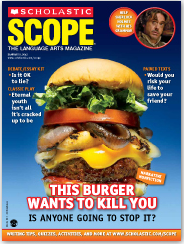 By visiting Scholastic Scope online, viewers have access to tons of free resources, including PDF files of stories and readers' theater pieces, vocabulary and grammar worksheets, ACT-style quizzes, essay writing prompts, and much much more! I'm truly amazed that there is no log-in required to view these materials. There is even information regarding how the materials align with the Common Core State Standards. According to the website, these materials will be password-protected in the future, so visit their website and save these files while it's free! I plan on using many of the resources (my school has a subscription, so I will be able to access information even after it is password-protected); I'm particularly interested in the readers' theater pieces because they are a great way to expand students' background knowledge regarding literary masterpieces. 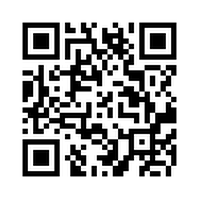 You've probably seen this strange little code boxes cropping up in advertisements and online. They're QR codes (Quick Response codes) and apparently they've been around for a long time, but have only recently become popular in the United States. Essentially, with the help of free software programs, Smart phones can scan the codes and get links to related videos, images or websites. For example, if you have QR software downloaded on your phone (I use QR Reader for iPhone) and you hold your phone up to the code to the left, your phone will be directed to meandmylaptop.weebly.com This is great for advertisers who want to link consumers to advertisements; however, it can also be useful in education. One way that QR codes is currently being used is to create scannable answer keys and scavenger hunts. My own goal this year is to have my seniors do some writing in response to places in the community. Once the writing is finished, I would like to post QR codes in these locations that links people to the student writing (which will be hosted on a web site). Imagine going into the local store and finding a QR code that links you to a short story, poem or narrative essay inspired by that store. I'll be sure to post an update on this idea after I've completed the project in December. Until then, be sure to watch the video embedded below. It does a phenomenal job of explaining what QR codes are, how they are currently being used, and how you can generate your own QR codes. More information about QR codes: http://www.iste.org/connect/iste-connects/blog-detail/11-01-12/Using_QR_Codes_in_Education.aspx http://michaelbromby.wordpress.com/2011/06/01/qr-codes-in-education/ http://www.freetech4teachers.com/2011/07/qr-code-treasure-hunt-generator.html http://museforjews.com/2011/07/23/qr-codes-in-education-whats-the-point/ UPDATE 8-8-11 Tom Barrett has added Interesting Ways To Use QR Codes to his website. View the slideshow HERE. Okay, so this isn't really a "technology find," but it's definitely worth watching. A mother decided to "opt out" of standardized testing on the basis that such tests are not accurate assessments, cause unnecessary stress on students, and are used to punish school districts. I can understand both sides of the issue here; of course, I do support teaching test prep strategies, but I am not a fan of drastically altering a school's curriculum in order to teach only to the test, which has sadly become a reality for an increasing number of schools not meeting state goals. (I'm lucky enough to work in a district that has not been drastically affected by state testing.) This would be a great discussion starter. I would be interested in hearing students' opinions on this topic. This would work well as a persuasive essay prompt, debate topic, or nonfiction reading assignment. Read the full article HERE.  My Fake Wall allows user to create fake Facebook walls for fictional (or nonfictional) characters. The fake wall to the left is from the website's "Favorite Fake Walls." This would make an excellent exercise for introducing characterization. I would love to see a chemistry teacher have students create fake walls for different chemicals, or see a math teacher have students create walls for different geometric shapes or theorems.  Books of Hope is a wonderful nonprofit organization that assigns schools in the United States to schools in Uganda. US schools then create educational books for their sponsored schools overseas. There is a $200 participation fee per school. In the past, when my school district was able to cover the cost of the project, this was one of the most fulfilling projects that my students participated in all year. Books of Hope does a wonderful job of providing background information for multiple age levels, in order to provide a context for students to better understand their audience. Students will truly enjoy knowing that they are creating a valuable tools that will affect the lives of others.  While Kelly Gallagher may not be a "Web 2.0 Tool," his website is a wonderful resource. I had the pleasure of attending one of his workshops on reading comprehension strategies, and I have been using his Article of the Week database ever since. Gallagher and his coworkers post PDF files of nonfiction articles on current event topics. I have students highlight main ideas, new words, and areas of confusion; they also annotate passages in the margins and then write a brief response to the articles. This is an excellent source for "beefing up" the nonfiction component in your curriculum. |
AuthorDr. Jessica Pilgreen, Ed.D. Archives
December 2020
Categories
All
|
